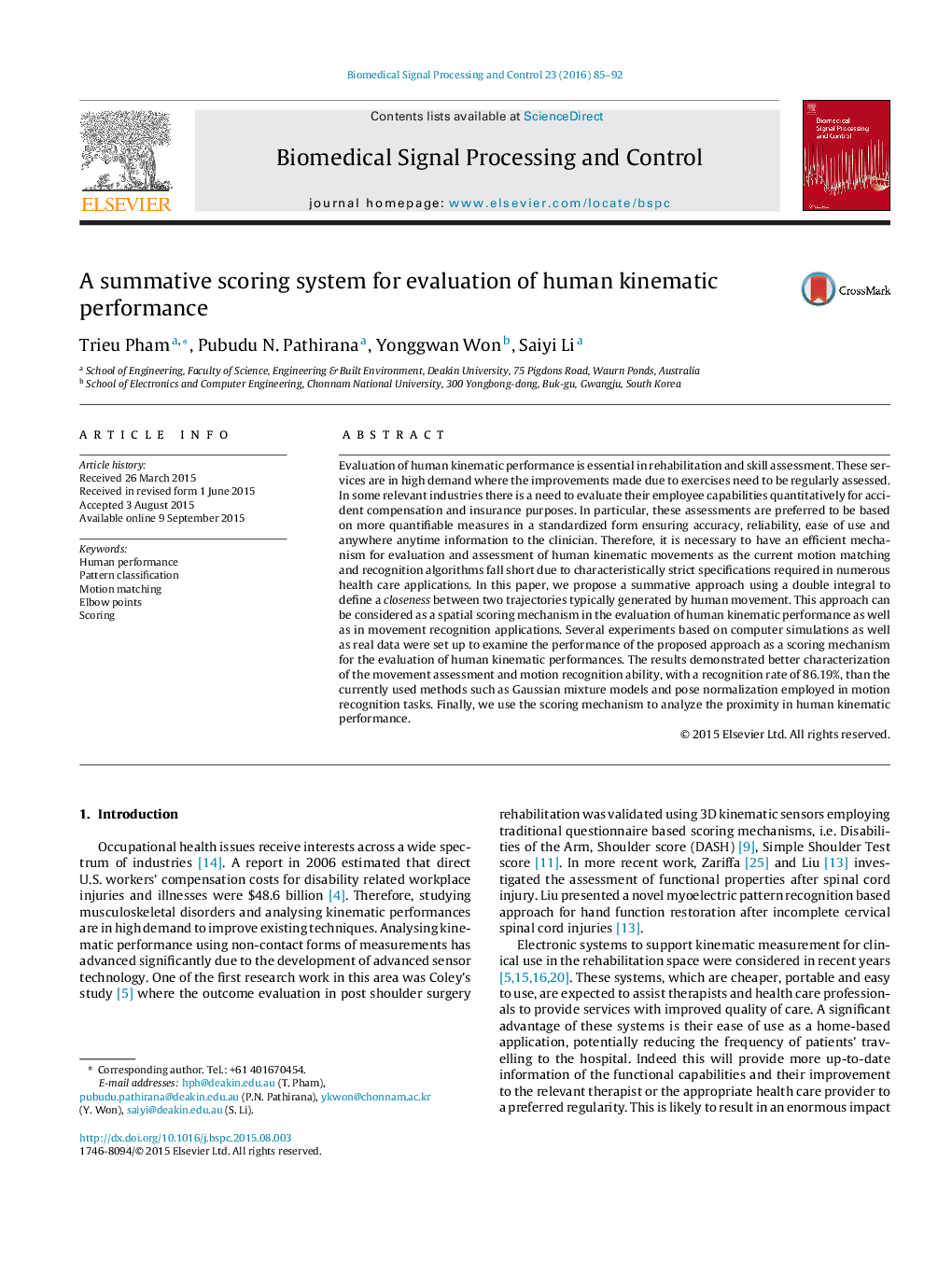| Article ID | Journal | Published Year | Pages | File Type |
|---|---|---|---|---|
| 558063 | Biomedical Signal Processing and Control | 2016 | 8 Pages |
•The paper proposed a novel approach to satisfy characteristics for the mechanism used in evaluation of human kinematic performance.•Experiments based on computer simulations illustrated that the approach was invariant to velocity, sampling rate while it was sensitive to scaling and dissimilarity.•Experiments based on well established database were carried out to evaluate the performance of the proposed approach. The results demonstrated better characterization of the movement assessment and motion recognition ability, with a recognition rate of 86.19%, than the currently used methods such as Gaussian mixture models and pose normalization employed in motion recognition tasks.
Evaluation of human kinematic performance is essential in rehabilitation and skill assessment. These services are in high demand where the improvements made due to exercises need to be regularly assessed. In some relevant industries there is a need to evaluate their employee capabilities quantitatively for accident compensation and insurance purposes. In particular, these assessments are preferred to be based on more quantifiable measures in a standardized form ensuring accuracy, reliability, ease of use and anywhere anytime information to the clinician. Therefore, it is necessary to have an efficient mechanism for evaluation and assessment of human kinematic movements as the current motion matching and recognition algorithms fall short due to characteristically strict specifications required in numerous health care applications. In this paper, we propose a summative approach using a double integral to define a closeness between two trajectories typically generated by human movement. This approach can be considered as a spatial scoring mechanism in the evaluation of human kinematic performance as well as in movement recognition applications. Several experiments based on computer simulations as well as real data were set up to examine the performance of the proposed approach as a scoring mechanism for the evaluation of human kinematic performances. The results demonstrated better characterization of the movement assessment and motion recognition ability, with a recognition rate of 86.19%, than the currently used methods such as Gaussian mixture models and pose normalization employed in motion recognition tasks. Finally, we use the scoring mechanism to analyze the proximity in human kinematic performance.
